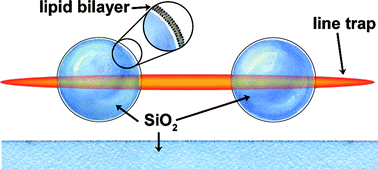Modulation of attractive colloidal interactions by lipid membrane-functionalization†
Abstract
Achieving simple, effective control of interactions between microparticles is an important goal of colloidal science, due both to its widespread technological relevance and its potential to illuminate the fundamental mechanisms governing structure and dynamics in complex fluids. Such control has remained elusive, however, especially with respect to attractive forces between microparticles. The studies described here adopt a biomimetic approach, functionalizing inorganic microparticles with biomolecular membranes. We provide the first reported measurements of the pair interaction energy, the key determinant of colloidal behavior, for such particles. The data demonstrate strong, tunable attractive interactions. Moreover, control of


 Please wait while we load your content...
Please wait while we load your content...